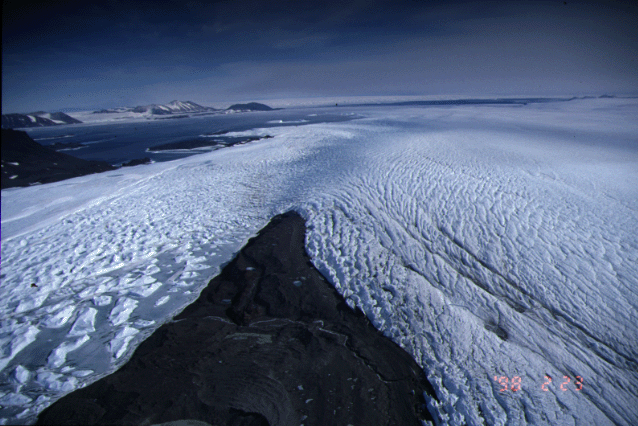
Since International Geophysical Year (IGY), geoscientists of JARE have been working in the regions around Lutzow-Holm Bay, the Yamato, Belgica, and S¿r-Rondane Mountains for 35 years. Since 1991, after the termination of the program in the Sor-Rondane Mountains, JARE has started reinvestigation in the region around Lutzow-Holm Bay in order to reveal specific geological and geomorphological problems, taking into account results that we have obtained from other Gondwana fragments such as India and Sri Lanka.
During during these investigations, our target has been focused not only on correlation of terrains in the framework of Gondwana but, or more specifically, the origin and evolution of continental crust.
Recently, studies on high-grade metamorphic rocks, which are components of the ancient continental crust, have drawn much attention in other continents, in particular, in North America, Eurasia, India, Australia, etc. In addition, "Geotransect Project" has been performed in several continents in cooperation with seismic, magnetic and gravity data.
JARE has achieved reflection seismic experiments along the line between Syowa and Mizuho Stations in 1979-81. On the basis of on this and other geophysical and geological data, the Geotransect from the Lutzow-Holm Complex (east) to the Yamato-Belgica Complex (west) has been published. In order to explain the geological relationships, the continental collision in Cambrian has been proposed. Australian and Russian geologists, on the other hand, have worked in Enderby Land during 1970 to 80s and clarified that the Napier Complex has undergone extremely distinctive metamorphism in Archean. Therefore, as a whole, it is very important to understand the structure and evolution of geologic blocks distributed from Eastern Dronning Maud Land to Enderby Land for about 1000km long, because this region preserves a prolonged history for longer than 3500 million years (approximately 76% of the total Earth's history).
As it is well known, 97% of Antarctica is covered with continental ice sheet, which has a great concern with environmental change on a global scale. With regard to the Cenozoic fluctuations of the Antarctic ice sheet, goechronological information of a large deglaciation of 2-3 Ma in the S¿r-Rondane region and a high sea-level of 30 ka in the Lutzow-Holm Bay region have attracted international interests, but we need more data to cover whole range of the time scale on both areas.
With these scientific backgrounds, we propose the following targets to be concerned in the SEAL project .
